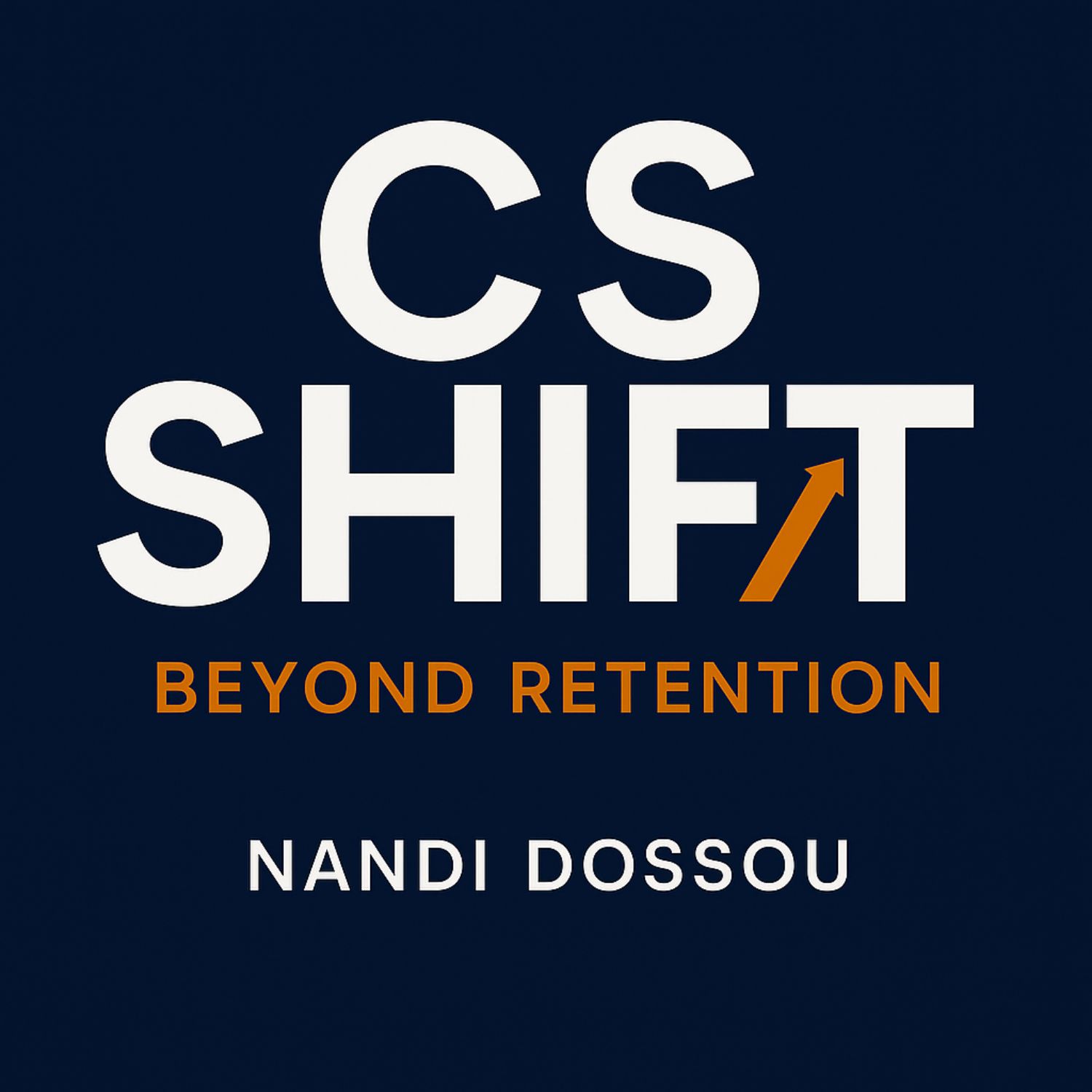From Promise to Proof: Mapping, Measuring & Monetizing Value
In this episode of my series: 🎙️ “From Promise to Proof: Mapping, Measuring & Monetizing Value”,
I lay out the engine room of value realization:
- How to map initiatives to value drivers that matter to the business
- How to define baselines and target outcomes that are credible and actionable
- How to build a solid ROI model that resonates with finance and leadership
If Episode 1 set the stage, Episode 2 is where strategy turns into measurable impact.
Transcript
Welcome to CS Shift, the podcast that goes beyond retention with strategies for customer success leaders navigating the new era.
Speaker A:Let's dive into today's episode.
Speaker B:Welcome back to CS Shift.
Speaker B:This is episode two of our new series on value realization and error.
Speaker B:Last week we saw that to really prove value, the first thing is to define the North Star.
Speaker B:The North Star being a strategic business outcome that is measured and tracked within the company and not only looking at the rollout or the deployment or the adoption.
Speaker B:And then identify value drivers from the North Star that has been identified.
Speaker B:So we're going to continue with three other steps.
Speaker B:The third one is mapping initiatives to value drivers.
Speaker B:So mapping initiative to value drivers is really to show the causal chain.
Speaker B:This initiative is leading to this value driver and leading to this business KPI, right?
Speaker B:So imagine for instance that you work in a company as a CS leader and your company sells learning management systems, learning management software, and you have this client who bought your solution because they want to unify lms.
Speaker B:So learning management system within all their regional organizations.
Speaker B:Because before every region was independent and that was creating issues.
Speaker B:So you going to map out the different initiatives from the deployment of your LMS to the value drivers and define the KPIs.
Speaker B:Let's say that the first initiative for instance is roll out DLMs to all the regions globally and the value driver, if you remember I said that value drivers generally fall under four categories, whether it's revenue uplift or cost optimization or experience gains or risk reduction.
Speaker B:So you need to map your initiative to one of the value driver.
Speaker B:In our case, for instance, we might say that this deployment can be mapped to experience gain in the sense that we're deploying it in order to cover some gap skills.
Speaker B:For instance, have a group of population of the company get certified so we can link it to experience gain and then define a KPI.
Speaker B:Whatever the KPI will be certain certifications obtained, we have to define them, right?
Speaker B:We might also say that deploying this LMS will reduce cost because instead of having several type of learning online learning systems, the company will use only the learning management system your company sells.
Speaker B:So for the same thing we're going to map the full deployment and usage, let's say to cost reduction and then define the KPI.
Speaker B:So mapping initiative to value driver is the first step, right?
Speaker B:And then after that we establish the baselines and the target outcomes.
Speaker B:The goal of establishing baselines and target outcomes is really to quantify the before state and then define measurable after state.
Speaker B:So the key principles are are very simple what is the baseline?
Speaker B:The baseline is the current performance or it is how things are today or how things are before using the system, the software your company is selling, and then the target.
Speaker B:It's the realistic improvement that has been agreed with business owners, with executives, and then defining an owner, which means an accountable executive for each value driver.
Speaker B:So if we go back to do the example of the learning management system software, so let's say that, you know, we, the company want to reduce employee attrition, like they have a high turnover.
Speaker B:So by deploying this learning management system, because many employees feel that they're not learning, they're not growing in their skills, capacities or even internal mobility.
Speaker B:So let's say that this initiative now is mapped to the value driver of employee retention.
Speaker B:Then you're going to define the baseline, which is, you know, whether it's the percentage of turnover before, you know, deploying this learning management system and then the target, you know, what do we want to see improve in term of retention and then with the owner, the accountable executive for that.
Speaker B:When this is done, this is when you can build the ROI and value model.
Speaker B:It means that you're going to convert the value targets into financial impact and roi.
Speaker B:So the financial impact, you're going to look at the total benefits of using your solution versus the total cost of using your solution and then derive the net benefits and the ROI percentage.
Speaker B:So if I go back to the example of deploying a unified learning management system, what have been the benefits of having less turnover?
Speaker B:So all the cost of recruiting, all the cost of time to recruit, all the impact on the revenue, for instance, uplift those benefits, compare to the cost like the implementation of your system, the run the change management and then from there you're going to show the net benefits and the roi.
Speaker B:Now by doing this exercise.
Speaker B:And again, because it's a joint exercise, this is something that can be done regularly, you know, with the executives by having a dashboard where you're looking at those values at each KBR for qbr, for instance, and then, you know, become easy and peasy.
Speaker A:So this is it.
Speaker B:Next week we're going to close on this topic and I'm going to share with you how to institutionalize value realization and also give you a practical case study based on my experience and how I was able to build that so that you will be able to implement the same within your company.
Speaker B:And again, if you're doing it differently, I am more than happy, you know, to learn.
Speaker B:You know, let's discuss on LinkedIn.
Speaker B:Thank you so much for listening and talk to you next week.
Speaker B:In the meantime, enjoy the Shift.
Speaker A:Thank you for listening to this show.
Speaker A:Remember, the new mandate for customer success is driving growth.
Speaker A:And growth does not happen in isolation.
Speaker A:It's driven by strategic and operational leadership.
Speaker A:Subscribe and share this episode with an overseas leader ready to shift their strategy.
Speaker A:I'm Nendi Do Su and this is CS Shift.

